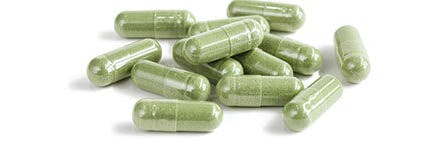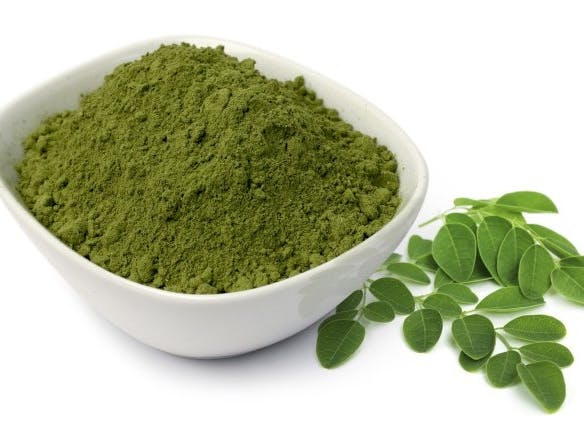
on
For a drug that a lot of people have never heard of, kratom has gotten a lot of press coverage lately. Last week, the United States Food and Drug Administration announced a mandatory recall of all kratom products from one distributor following a rash of reports from the Centers for Disease Control and Prevention that a multi-state Salmonella outbreak linked to kratom has sickened 132 people in 38 states. While there is reason for concern, it’s important to attribute it to the right factors. A closer look at the situation and the scientific literature on kratom reveals there’s a lot more to it than current alarmist headlines suggest.
Used for centuries in Southeast Asia medicinally and recreationally, the herbal drug, which is known for effects like stimulation and pain relief, sedation, and euphoria, has recently also become popular in the U.S. for medical and recreational reasons. Almost as quickly, state and federal regulators have moved to restrict access to it: In 2016, the Drug Enforcement Administration tried to ban kratom in order to “avoid an imminent hazard to public safety,” citing the drug’s opioid-like high that occurs at higher doses. The DEA’s efforts stalled, and in February, the Food and Drug Administration announced that it would make moves to restrict access to kratom. The CDC announcements about Salmonella-tainted kratom have underscored the potential dangers of taking the drug.
But Salmonella infection is one thing we are certain is dangerous; the safety of kratom itself is a different and open question, as research on it is sparse. Here’s what we actually know.
Not a Deadly “Opioid”
Kratom hasn’t been proven to be totally harmless, but it’s not a true opioid, and its effects (without Salmonella) are not on par with the harm currently caused by opioids in the U.S. Described as an atypical opioid in a Journal of Clinical Pharmacy and Therapeutics paper published earlier this year, kratom acts on some of the same biological receptors as opioid drugs do, but it also acts on some other pathways that make its effects different from the effects of drugs like heroin or morphine. This bears out in human case studies.
In an article published in The Conversation in 2017, the University of Connecticut’s Head of the Department of Pharmacy Practice, C. Michael White, Ph.D., summed up the current state of scientific research on kratom safety:
Kratom is a promising option as an effective and safe substitute for people addicted to prescription opioids, which needs to be explored. At the same time, kratom has high addiction potential and is risky when combined with other psychiatric drugs or drugs of abuse.
The FDA report from February outlines 36 deaths that involved kratom, which, for scale, is less than one-tenth of one percent of the 40,000-plus opioid overdose deaths in the U.S. in 2016. The case reports the alleged kratom deaths reveal that, in many cases, users died from a combination of kratom and other drugs, some of which, like morphine or alcohol, could cause an overdose death on their own. The truth is, we just don’t know. Future research should elucidate this controversy, though kratom advocates fear that the FDA will continue to overblow the risks of this drug in order to make it illegal.
Local news is likely to make it even easier for the FDA to sway public opinion. A local CBS affiliate news story from Friday, for instance, not only misstates that kratom is a Schedule I drug — the same legal status as marijuana and heroin — but it also makes the case that kratom is just as addictive and deadly as conventional opioids, which is not accurate. Kratom is not currently scheduled under the Federal Controlled Substances Act.

The Risks of a Grey Market
It is unclear whether kratom is inherently dangerous or not, but the Salmonella cases suggest that the drug’s preparation and distribution channels can cause their own problems. The CDC and FDA identified distributors of Salmonella-tainted kratom but haven’t tracked down the actual source of the contamination, hinting at the problems that can arise when production is forced semi-underground. Murky sourcing and unclear origins lead to consumers buying products of [unpredictable potency and unknown purity]{https://www.nytimes.com/roomfordebate/2016/10/19/is-kratom-the-plant-that-heals-or-kills/regulate-quality-dosage-and-purity-of-kratom). As federal regulators continue to crack down on the drug, these problems will likely worsen.
Still, for context, there are over 1 million Salmonella cases per year in the U.S., making the kratom-associated outbreak a drop in the bucket.
A Thriving Underground
Web forums reveal that the opioid-like drug has a devoted following. The r/kratom subreddit has over 40,000 subscribers who discuss chemistry, policy, and personal experiences. Among these personal stories, a pattern emerges: Many kratom users are seeking more than a buzz. Rather than dorm room experimentation, kratom users often seek relief from chronic pain or opioid dependency. For them, kratom is a cheaper, safer alternative to illicit and prescription drugs.
The kratom story will surely develop throughout this year, especially as Attorney General Jeff Sessions seems keen on rolling back the progress the U.S. has made on drug policy. With the support of the American Osteopathic Association, kratom has a foothold among some medical professionals who view it as a legitimate path for opioid replacement. Current medical evidence suggests that kratom is safer than many available opioids, including methadone, which is commonly used for long-term maintenance in individuals with opioid dependency. Even if the FDA and DEA succeed in their fight against kratom, it probably won’t go anywhere.







